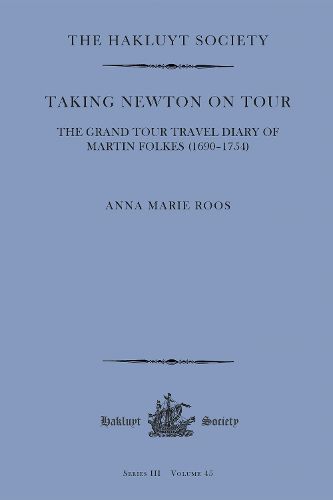Readings Newsletter
Become a Readings Member to make your shopping experience even easier.
Sign in or sign up for free!
You’re not far away from qualifying for FREE standard shipping within Australia
You’ve qualified for FREE standard shipping within Australia
The cart is loading…






This volume provides a critical edition of an exceptional example of the 'Scientific Grand Tour' taken by Martin Folkes. Martin Folkes (1690-1754) was Newton's protege, antiquary, mathematician, and the only simultaneous president of the Royal Society and the Society of Antiquaries. In 1733-5, he went on Grand Tour as a scientific ambassador for the Royal Society, demonstrating Newtonian optics to Italian virtuosi. He also measured ancient and Renaissance buildings to understand past architectural engineering and design. His 97-page illustrated diary (in the Bodleian Library at the University of Oxford, shelfmark MS Eng. misc.c.444) also challenges the long-standing, mistaken impression among scholars that the Royal Society was in decline in the eighteenth century. Analysing Folkes's activities abroad and creating an edition from this source tracing his Italian route provides a novel reading of Newtonianism and the purpose of the Grand Tour as a vehicle for scientific research and statesmanship.
$9.00 standard shipping within Australia
FREE standard shipping within Australia for orders over $100.00
Express & International shipping calculated at checkout
This volume provides a critical edition of an exceptional example of the 'Scientific Grand Tour' taken by Martin Folkes. Martin Folkes (1690-1754) was Newton's protege, antiquary, mathematician, and the only simultaneous president of the Royal Society and the Society of Antiquaries. In 1733-5, he went on Grand Tour as a scientific ambassador for the Royal Society, demonstrating Newtonian optics to Italian virtuosi. He also measured ancient and Renaissance buildings to understand past architectural engineering and design. His 97-page illustrated diary (in the Bodleian Library at the University of Oxford, shelfmark MS Eng. misc.c.444) also challenges the long-standing, mistaken impression among scholars that the Royal Society was in decline in the eighteenth century. Analysing Folkes's activities abroad and creating an edition from this source tracing his Italian route provides a novel reading of Newtonianism and the purpose of the Grand Tour as a vehicle for scientific research and statesmanship.